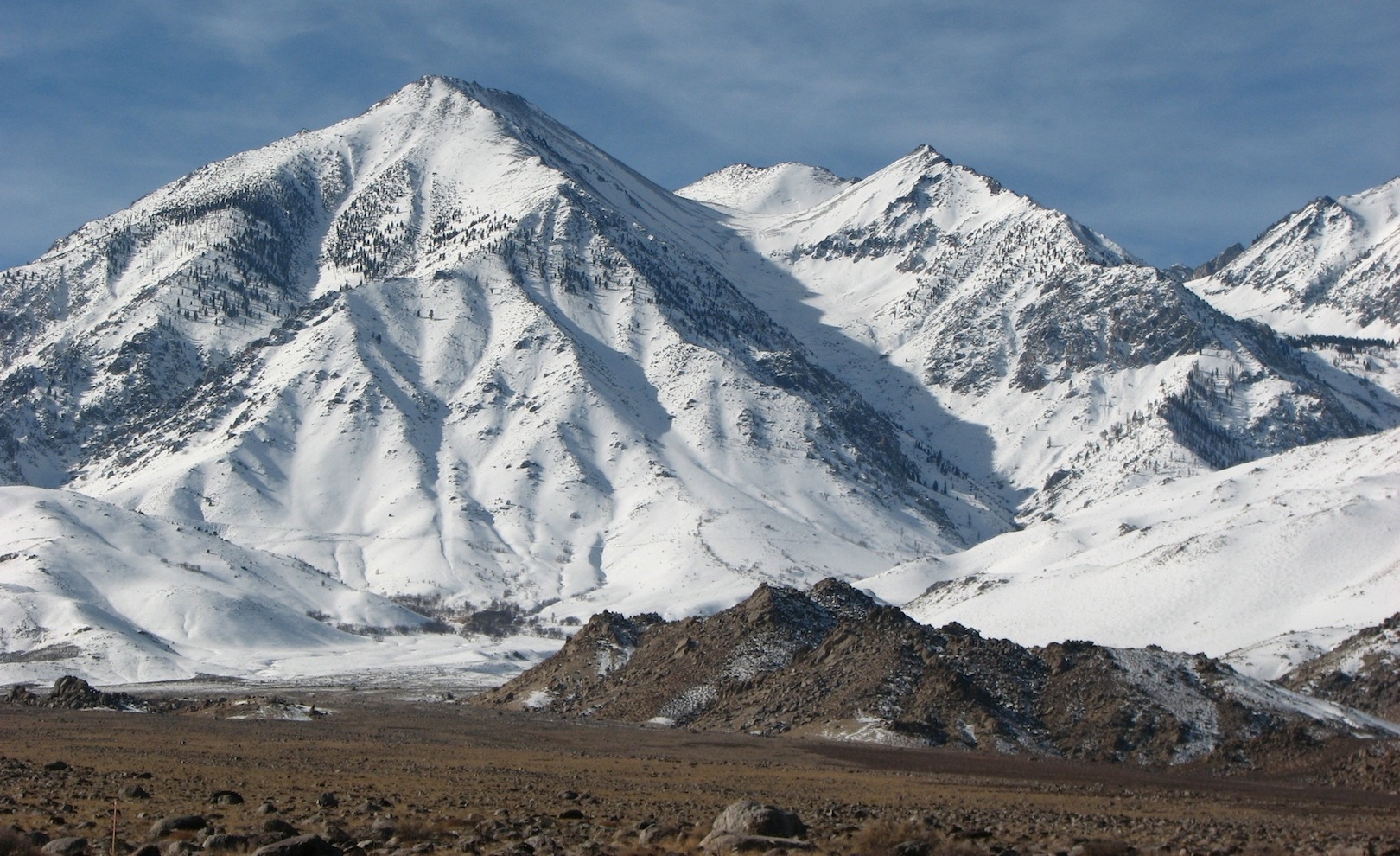Beyond, Beneath and Behind the Wild Frontier
By Joseph V. Siry
 Eastern slope of the Sierra Nevada Mountains from the Owen's Valley.
Eastern slope of the Sierra Nevada Mountains from the Owen's Valley.
Parts of the essay's 30 paragraphs.
Paragraph sentence Sources
1 Turtle
Island with a boundary between Indigenous and Europeans persists
2 misplaced sentiment for an
imaginary condition of a landscape in
"balance" that has never
ecologically existed.
3 wild
place desperately in
need of reconnaissance, surveillance and modification.
4 de Tocqueville "Americans themselves .... march across these wilds, draining
5 American
attitudes about nature were born of two very real struggles one against
6 George
Catlin a nineteenth century painter of Indians and sympathetic chronicler
7 the
crucible of our democratic experience -- American civilization is for many
8 Illusions are important because they reveal the motives, beliefs, and values of the people harboring follies based on factual errors
9 Thoreau meant wild as "Not yet subdued to man, its presence
refreshes him." In
10 America as nature's nation was a civilization that
Europeans carved out of the
11 This
belief about the land as filled with inexhaustible resources and ample room
12 drawing
near divinity," suggests Nash. A simplistic connection was made
13 Callicott concludes that "American Indian complaints
that the very concept of
14 the
act reads there was "much decay of the breed of so excellent a fishe."
15 the
continent's natural flora and fauna would
appear inexhaustible. But the idea
16 the
turtles are seagoing sentinels foretelling the existence of land beyond the horizon.
As pilot lights to these strange and distant shores turtles remind us that the paths of
history and natural history cross early meaning that nature cannot be removed from history if we are to better understand our past.
17 Disturbance
frequently causes the spread of certain pioneer species of grasses or
18 New
England town a White Pine forest, not logged since the 1830s, was recently destroyed by a tornado,
which led to a dispute in the town meetings about the future of the woodland. Magazine
editor and author Michael Pollan as an example of the failure of
the wilderness metaphor to assist us in devising proper land-use policies.
19 wilderness
had become part of the problem" here: because "This forty-two acre
20 California
natives practiced irrigation by diverting seasonally flooded canals to
21 Native
peoples thrived agriculturally in the harshest of areas of the desert southwest
22 Ecology
and history fold neatly together to form a complex relation between
23 The
ability of the nation to persist in fabricating more convincing fantasies about
the frontier than it created believable descriptions is a disturbing truth
about the American fascination with natural areas and the wide-open spaces of
North America. While the tangible forests, rivers, swamps, glaciers and deserts
of the continent gave rise to obstacles and opportunities, Americans have
always measured their achievements, in part, with respect to the conquest of
the land, the harnessing of its waters and the subduing of its resources. In
the process of dismembering the fabric of life
24 Consider
this spectrum of three related words: wild
-- garden -- urban
wild garden urban
untamed plot
of tilled earth city
as civilized
state of nature soil
as a source cosmopolitan
evil edenic myth centralization
biotic order domestication uniformity
virtue agriculture public
space
disorderly divinely
ordered civic
order
25 very
different images of the appropriate origin and continuing locus of virtue in
26 Americans
have an impact on the planet thirteen
times greater than a Brazilian
27 founding
Boston in the 1620s, thought of this settlement as a
new Jerusalem set:
"As a city upon a hill" spreading a holy
light in a dark, hostile land. Americans still consider their landscape's
legacy as an exemplary beacon to others. Today the light metaphor stands for
the democratic values, commercial freedom and personal liberties associated
with the hill top city. But environmentally speaking national parks and
wildlife refuges are also "shining
examples" for the world of American optimism . . . Ecological
integrity, meaning the proper functioning of a natural area, is at the
foundation of a long-term, healthy economy. Obscuring this reality is the complexity of scientific thinking and the
persistently widespread faith in manifest destiny.
28 Our
search for identity led to a widely accepted myth: the wild frontier of
29 committed
as a people to the biological
restoration of significantly important
30 We
are late to recognize that truth because siren like the wild frontier myth
still beckons Americans
on our odyssey of self-discovery
A. No Balance of nature
B. Imbalance of settlement makes abundance seem normal
C. Patriotic images often confuse the ecological
conditions, connections
D. We have two legacies not one of optimism based
on abundance:
1.
Progress
2.
Parks
Sources
There are 22 illustrations of either photographs or duplications of paintings and the photograph (#23) above of the Owen's Valley.
Newberry Library for images of the west by by George Catlin – http://dcc.newberry.org/collections/art-and-exploration-in-the-american-west-and-mexico
Thoreau reader, on-line – http://thoreau.eserver.org
National Park Servce – http://www.nps.gov/cach/index.htm
Library of Congress – photographic collections – http://www.loc.gov/pictures/